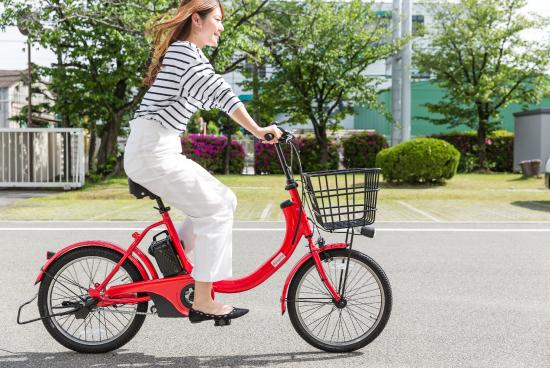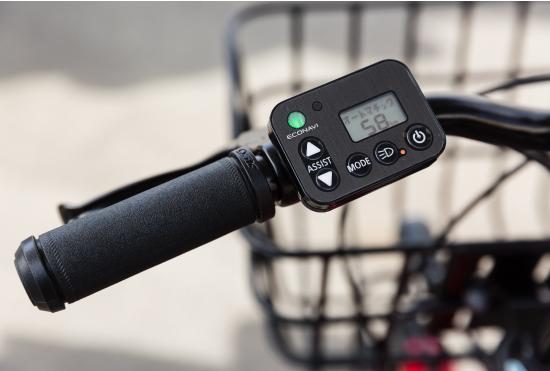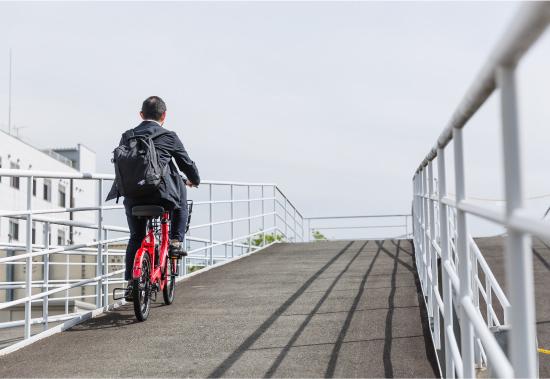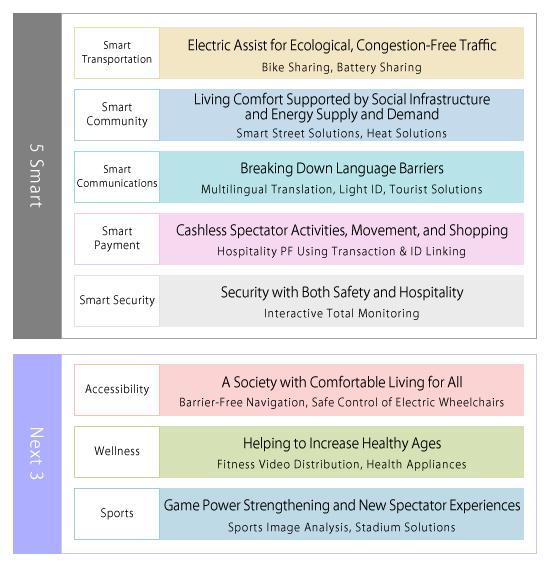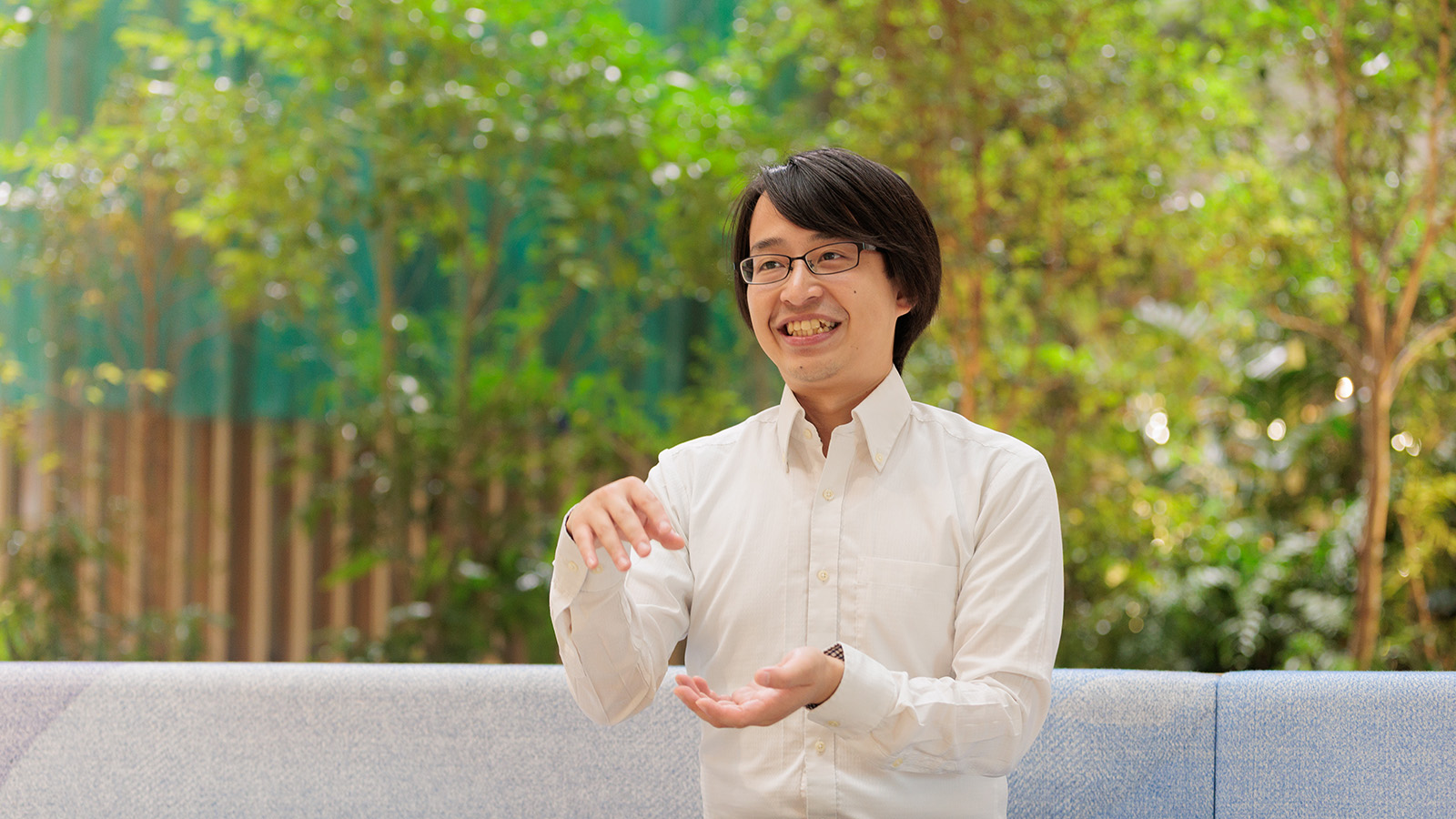
The year 2020 is only a little more than two years away. As concepts such as self-driving vehicles, drones, and BRT (Bus Rapid Transit) gather increasing attention, a transport system known as "Bike Sharing" is penetrating Japan as the number 3 means of public transport following trains and buses. Two years have passed since NTT Docomo, Docomo Bike Share and Panasonic conducted verification tests in 2016, and the need for this service has also propelled its growth from the initial launch in Tokyo to Osaka as well. As a result, we have accumulated the latest information on the changes and spread of these needs for the stakeholders.
2020 Is a Golden Opportunity for Bike Share Growth
In the "Long-Term Vision for Tokyo" presented by the Tokyo Metropolis in 2014, the "expansion of bike sharing" was offered as one of the primary means of Tokyo's public transportation for 2020. Naturally, this was intended to serve the large number of people flocking to the towns around Tokyo from inside and outside the country in 2020. Actually, an explosive bike sharing boom took place in London in 2012, which has grown into an essential form of transportation for the city's residents.
Spurred on by this activity, NTT Docomo, Docomo Bike Share, and Panasonic joined hands in the spring of 2016 to launch "Bike Share" and "Battery Share" verification tests in the Tokyo waterfront area. Following a simple registration, the user can start riding at any desired cycle port, and then drop the cycle off at a cycle port near his or her destination. This high level of convenience has helped the market to continue growing in scale.
Aiming for a "Mailbox-Type" of Convenience
The photo below shows the red "electric assist bicycles." These are the bicycles that are provided by Docomo Bike Share. The original sharing business was started by NTT Docomo in Yokohama City, Kanagawa Prefecture, in April 2011, and Docomo Bike Share was established in February 2015. As of the end of March 2018, this had grown to 25 bases nationwide, containing approximately 7,300 bicycles and about 700 cycle ports. The number of rentals increased at a speed of more than 200%, with 4,700,000 rentals in fiscal 2017. This is about 120 times the performance of fiscal 2011.
Kiyotaka Hori, CEO of Docomo Bike Share, attributes the success to "achieving a wide-area linkage within the Tokyo districts, and successfully increasing the number of cycle ports." Presently, bicycles can be borrowed or returned at nine Tokyo districts (Chiyoda-ku, Chuo-ku, Minato-ku, Shinjuku-ku, Bunkyo-ku, Koto-ku, Shinagawa-ku, Ota-ku, and Shibuya-ku) for extreme convenience. By providing cycle ports not only in the city areas, but also in residential areas, the number of contact points has greatly increased for users.
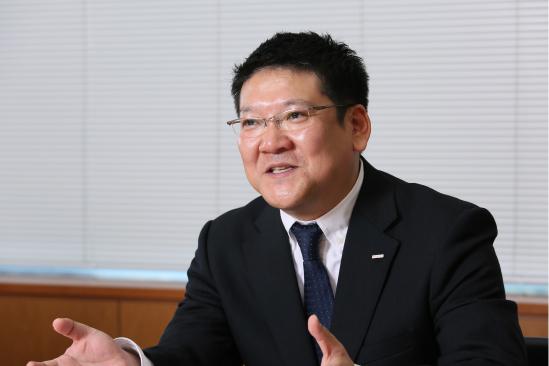
Kiyotaka Hori, CEO of Docomo Bike Share Co., Ltd.
While bike sharing was previously most commonly seen for sightseeing use, its "daily life" use gained speed by enabling it to straddle city, business, and residential areas.
"In areas like Koto-ku, where offices, shopping centers, and homes are adjacent to each other and mixed, the uses can be conveniently combined depending on the time zone - traveling to work and school in the morning, shopping in the afternoon, and traveling back home at night. Since the destinations in coastal areas are often too far to walk to, but too close to use the train, our service is well established in daily life. People are becoming increasingly accustomed to seeing our red bicycles in their neighborhoods." (CEO Hori)
Spreading the Joy and Attractions of Bicycles
As well as being "One of our leading business targets," Mr. Hori enthusiastically hopes that "Bike sharing will blend into daily life by 2020. We want to quickly increase the scale to a level of 10,000 cycles or more by 2020, similar to the levels of London and New York."
It is because of this that highly reliable, made-in-Japan models of electric assist bicycles, which form the core of the system, were selected. As one of the companies offering these models, a cooperative relationship was established two years ago with Panasonic Cycle Technology. However, a number of issues have been faced in the two years since its establishment. To begin with, the unexpectedly high operating ratio exhausted the batteries. Also, in addition to comparatively small women users, there were many large foreign tourists using the bicycles, so the bicycle bodies had to be adjusted to fit them. And because the ports for cycle return tended to concentrate in specific locations, there was a great deal of work moving the bicycles around which placed a larger than expected burden on the workers. In order to resolve these issues, a second new model is being introduced in the summer of 2018. In its development, Docomo Bike Share has requested that user needs be thoroughly determined and reflected in the new models.
"The first requirement for bike sharing is that the bicycles be easy for everyone to ride. To achieve this, we used a frame with a low center of gravity so it would be easy for women to ride. In addition to that, we placed emphasis on durability, easy maintenance, and a battery that lasts as long as possible. We requested a careful examination focusing on these points from a variety of angles." (Mr. Hori)
Technical Progress Led to Endless Possibilities for Bicycles and IT
As a result, a new model has been completed that satisfies all of the essential requirements. Mr. Hori explained the significance of cooperative work as follows.
"We feel that this project in particular provided a large number of achievements as a cooperative venture between the Panasonic Group and the NTT Docomo Group. Our electric assist bicycles are equipped with a variety of IoT functions, such as a communication module, GPS, and acceleration sensor. We're confident that these will be combined with the abundant assets and technologies possessed by the Panasonic Group for even greater achievements in the future. When we enter the 5G era of ultrahigh-speed, multi-connection communications, there will be even higher demand for connected bikes." (Mr. Hori)
Full-fledged service began in Osaka City in May 2018. Up to this point, the system had been provided to a local company, called HUBchari, but it was now expanded to a form in which bicycles could be borrowed or returned at both Docomo Bike Share and HUBchari. Mr. Hori clearly explained that, "Even urban centers like Tokyo and Osaka have differences in environments and needs, so we were facing new challenges."
Mr. Hori, who is a cyclist himself, described the power that "future bicycles" will have.
"Bicycles let the user wander off into side roads to discover interesting shops and areas, while providing many advantages in promoting health. From now on, they won't merely be a vehicle for riding, they'll connect with IT to give easy access to things like coupon and area information. By transmitting the joy and attractions of "bicycles plus alpha," to users, I believe they'll offer even greater value as substitutes for existing forms of transportation." (Mr. Hori)
Aiming for Designs and Convenience That Everyone Can Enjoy
Panasonic Cycle Technology's development proceeded after receiving the demands of Docomo Bike Share. Yoshinobu Nakada, Managing Director of Panasonic Cycle Technology, said, "From the viewpoint of usability, a highly universal design is required. We incorporated a lot of innovations into the design, aimed for a unisex approach and a structure that would be easy for people of many different ages to use. After proposing a variety of ideas, we refined them one-by-one with Docomo Bike Share."
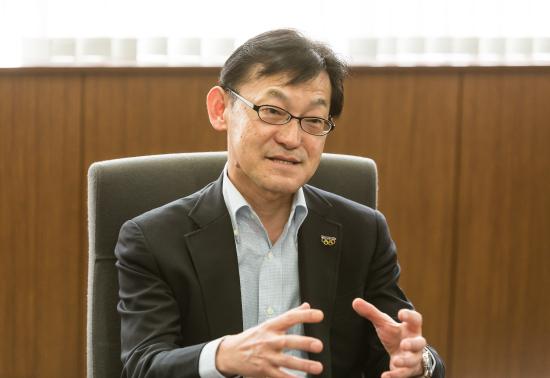
Yoshinobu Nakada, Managing Director of Panasonic Cycle Technology Co., Ltd.
The new model was a complete revision of the first-generation model of two years ago. For easier riding, the distance from the saddle to the handlebar was about 8 cm longer than the first-generation model. This would allow even large foreign tourists to ride with ease. This development envisioned future growth in in-bound demand.
The battery, which serves as the core of the electric assist bicycle, was increased in power - from 12 Ah to 16 Ah - without any change in size. This increased the riding distance by approximately 30%.
In order to lower the cost, the new model features the use of parts from models on the market. A sturdy basket, saddle, tires, spokes, motor, fingertip switches, and other parts are used mainly from Panasonic models that are designed to carry children. According to Mr. Nakada, the main reasons for using these common parts are that, "They have a track record in the market and their reliability can be confirmed." The power unit has a power supply function and has added value in that it can use new electronic devices.
Based on the Beliefs of the Founder, Konosuke Matsushita, Products Continue to Supply Safety and Security
Describing the newly completed second-generation model, Mr. Nakada "is confident that it will provide customers with maximum riding comfort." This includes the history and pride that Panasonic has accumulated in its craftsmanship.
"We have a wealth of knowledge from our many years of producing bicycles, and have developed and manufactured the power unit, which requires considerable technical skill, entirely in-house. I think our strongest point is that we are able to fulfill the various demands of Docomo Bike Share with a one-stop operation." (Mr. Nakada)
In 2017, more than 600,000 electric assist bicycles were shipped domestically in Japan. Panasonic's share of this total was more than 10%. As the market gradually takes shape, the needs will become increasingly diverse. In addition to models for shopping and carrying children, there will be needs for sports use, town bikes, and business models. Electric assist bicycles, and the environment surrounding bicycles in general, will continue to change.
"Naturally, evolution will be required, but as a vehicle, a strong base of safety and security will never change. What is the value of a bicycle? I hope that we will never stray from that true quality.
"As of 2018, a total of 66 years have past since our predecessor, the National Bicycle Industrial Company, was established by the founder, Konosuke Matsushita. Of all the companies that he founded, this has been about the only one whose products have not undergone major changes. This was a business that the founder, Konosuke Matsushita, established to make people's lifestyles richer not only inside the house, but outside as well. We would like to continue to preserve his thoughts in this regard." (Mr. Nakada)
From the start of verification tests in 2016, this business has achieved accelerated growth in only two years' time. Following the next two years, at the core time of 2020, we will see how deeply bicycles have been accepted as public transportation. We hope to follow the progress of this impressive enterprise.
Column: Continuing the Challenge Past 2020
As a TOP sponsor for the Olympic Games and Official Worldwide Paralympic Partner, Panasonic established the "Tokyo Olympic and Paralympic Promotional Headquarters" in 2014. In addition to developing new technologies and services that contribute to town-building for 2020 Tokyo, we are also developing new businesses.
Anything that hints at business creation helps to solve social issues. Searching through numerous social issues, the Promotional Headquarters has established the "5 Smart + Next 3" Pillars.
Of these, Panasonic is cooperatively engaged in bike sharing as a means of achieving smart transportation. As a TOP sponsor for the Olympic Games and Official Worldwide Paralympic Partner, Panasonic will provide electric assist bicycles to the Tokyo Olympics. We hope this will also help to develop new markets.
Section Manager Hideki Inoue of the Project Promotion Section, Strategy Planning Department, Tokyo Olympic/Paralympic Promotion Headquarters says, "Bike sharing will benefit not only the local residents, but will provide sightseers and foreign tourists with an opportunity to test-ride an electric assist bicycle. We hope they will take a ride and see for themselves how convenient an electric assist bicycle is."
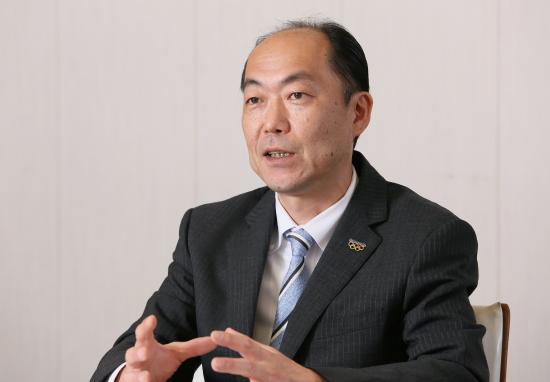
Hideki Inoue, Section Manager of the Project Promotion Section, Strategy Planning Department, Tokyo Olympic/Paralympic Promotion Headquarters
Utilizing the power supply function of the battery in the new model, and NTT Docomo's exclusive communication function, we are developing services aimed at the "next-generation bicycle." Mr. Inoue had the following to say about the future possibilities made possible by open innovation.
"The year 2020 is a milestone, and not the end of the business. New value will be produced while the challenge continuous. These activities will go on long after 2020. The ideal is to nurture business from the pillars formed by these efforts. (Mr. Inoue)
- Reproduced from the website "Mirai-kotohajime", by courtesy of Nikkei Business Publications, Inc.
# # #
- Disclaimer:
- We would like to note that Panasonic Newsroom is not a place to address personal Customer Service issues. Even though this is not the forum, Panasonic is always eager to resolve your concerns. Our local customer services contacts can be found at Global Support or you can see our list of Social Media Accounts to find the right channel for your queries and concerns.



